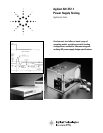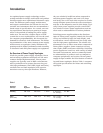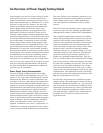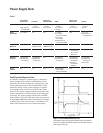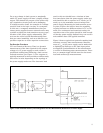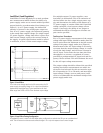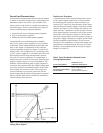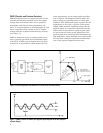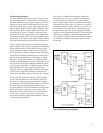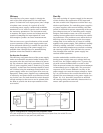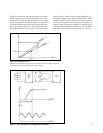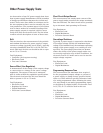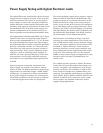
2
As regulated-power supply technology evolves,
testing methods for design verification and product
function require more sophisticated electronic equip-
ment. The different power supply architectures
and output combinations also dictate the need for
versatile test instruments that can accommodate a
broad range of specifications. As a result, one test-
ing requirement that has been growing in impor-
tance is the method of loading the power supply
under test. The need for a higher degree of load
control due to test sophistication, such as the need
for computer programmability, has increased the
demand for electronic load instruments. The follow-
ing examination of the most common power supply
architectures or topologies clearly illustrates the
growing need for higher performance and versatility
in electronic loads and power supply test equipment.
An Overview of Power Supply Topologies
Of all the possible power supply topologies, linear
and switching regulation techniques are the most
common design implementations. Linear power
supplies are typically used in R&D environments
and in production test systems because they pro-
vide high performance, low PARD (ripple and noise),
excellent line and load regulation, and superior
transient recovery time specifications. However,
they are relatively inefficient when compared to
switching power supplies, and tend to be large
and heavy due to the heat sinks required to contin-
uously dissipate power from the series transistors
and due to the magnetics used in this design. Typi-
cally, linear power supplies provide a most effec-
tive solution in lower power applications, and are
often used as subassemblies in various products.
Switching power supplies address the disadvan-
tages of linear power supplies (namely the low effi-
ciency and relatively large size and weight), and
are therefore a more effective and less costly solu-
tion for high power applications. The relative dis-
advantages occur in three areas when compared to
linear power supplies: slower transient recovery
time, higher PARD, and lower reliability. Switching
power supplies are used in a wide variety of indus-
tries and environments, and are commonly found
as subassemblies in products such as computers,
computer peripherals, and copiers. Recent power
supply designs combine the best features of switch-
ing and linear topologies. Below, Table 1 compares
the typical specifications for linear and switching
topologies.
Introduction
Table 1
Regulation Load Line Transient
Technique Regulation Regulation Response PARD Efficiency
Switching 0.05 – 0.5% 0.05 – 0.5% 1 – 20 ms 5 – 20 mVrms 65 – 85%
20 – 150 mVp-p
Linear 0.005 – 0.1% 0.005 – 0.1% 20 – 200 µs 0.25 – 5 mVrms 30 – 50%
(Series Pass) 1.0 – 15 mVp-p



